
El Yunque National Forest: A Tropical Paradise
Discover the magic of El Yunque National Forest, Puerto Rico's lush tropical rainforest, where adventure meets serenity amidst cascading waterfalls and rich biodiversity.
El Yunque National Forest is a lush, tropical wonderland located in the northeastern part of Puerto Rico. It is the only tropical rainforest in the United States National Forest System. With its rich biodiversity, scenic trails, and cascading waterfalls, El Yunque offers an unforgettable experience for nature lovers and adventure seekers alike. The forest covers nearly 29,000 acres and is home to hundreds of unique plant and animal species, some of which are found nowhere else on Earth. Visitors can explore a variety of hiking trails that range from easy to challenging, each offering stunning views and a chance to immerse oneself in the vibrant greenery. One of the most popular trails is the La Mina Trail, which leads to the picturesque La Mina Falls, perfect for a refreshing dip. In addition to its natural beauty, El Yunque has cultural significance as well. The forest holds a deep connection to the indigenous Taíno people, who believed that the spirit of the god Yúcahu resided in the mountains. Today, this mystical essence can still be felt as you wander through the ancient trees and hear the symphony of coquí frogs and tropical birds.
Local tips in El Yunque National Forest
- Start your visit early in the morning to avoid the crowds and enjoy cooler temperatures.
- Bring plenty of water, insect repellent, and sturdy hiking shoes for a comfortable experience.
- Check the weather forecast before your visit, as rain can make trails slippery and challenging.
- Visit the El Portal Rainforest Center for maps, information, and exhibits before heading into the forest.
- Respect the wildlife and plants; remember that El Yunque is a protected area with delicate ecosystems.
El Yunque National Forest: A Tropical Paradise
El Yunque National Forest is a lush, tropical wonderland located in the northeastern part of Puerto Rico. It is the only tropical rainforest in the United States National Forest System. With its rich biodiversity, scenic trails, and cascading waterfalls, El Yunque offers an unforgettable experience for nature lovers and adventure seekers alike. The forest covers nearly 29,000 acres and is home to hundreds of unique plant and animal species, some of which are found nowhere else on Earth. Visitors can explore a variety of hiking trails that range from easy to challenging, each offering stunning views and a chance to immerse oneself in the vibrant greenery. One of the most popular trails is the La Mina Trail, which leads to the picturesque La Mina Falls, perfect for a refreshing dip. In addition to its natural beauty, El Yunque has cultural significance as well. The forest holds a deep connection to the indigenous Taíno people, who believed that the spirit of the god Yúcahu resided in the mountains. Today, this mystical essence can still be felt as you wander through the ancient trees and hear the symphony of coquí frogs and tropical birds.
When is the best time to go to El Yunque National Forest?
Iconic landmarks you can’t miss
Castillo San Felipe del Morro
Explore Castillo San Felipe del Morro, a historical fortress in San Juan, Puerto Rico, offering stunning ocean views and a glimpse into the island's rich history.
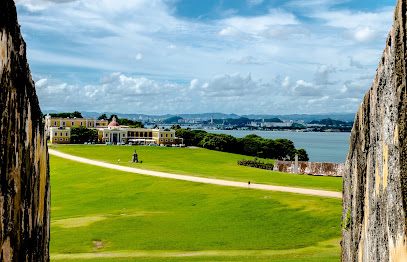
Carabalí Rainforest Park
Explore the adventure-filled Carabalí Rainforest Park, where thrilling activities meet the breathtaking beauty of El Yunque National Forest.
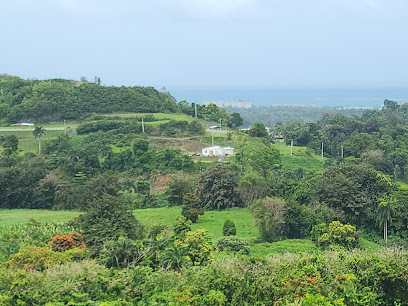
Las Pailas
Explore the lush landscapes and stunning waterfalls of Las Pailas, a must-visit tourist attraction in Luquillo, Puerto Rico.
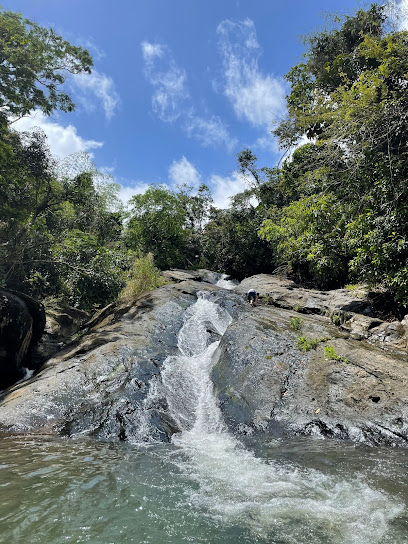
Torre Yokahú (Yokahu Tower)
Discover the stunning vistas of Torre Yokahú in El Yunque National Forest, where nature's beauty meets breathtaking panoramic views of Puerto Rico.
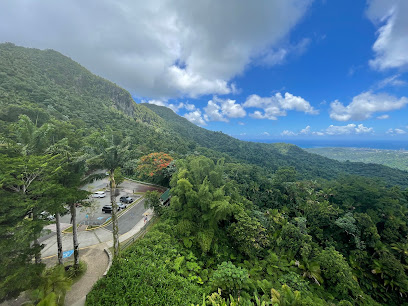
El Portal de El Yunque Visitor Center - El Yunque National Forest
Explore the beauty and biodiversity of El Yunque National Forest at El Portal de El Yunque Visitor Center, your gateway to adventure in Puerto Rico's tropical paradise.

La Piedra Escrita
Explore the ancient petroglyphs of La Piedra Escrita in Jayuya, Puerto Rico, a must-visit site for history lovers and nature enthusiasts alike.
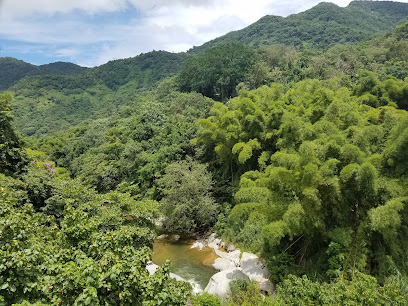
Juan Diego Falls
Experience the breathtaking beauty of Juan Diego Falls, a hidden gem in El Yunque National Forest, where nature enchants and adventure awaits.
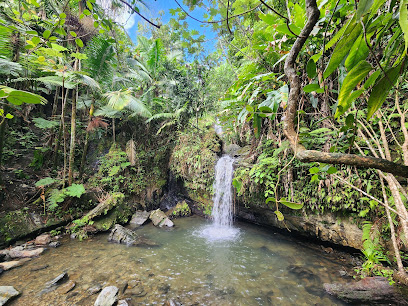
Bosque Estatal de Carite
Explore the lush trails and diverse wildlife of Bosque Estatal de Carite, Puerto Rico's stunning national forest sanctuary.
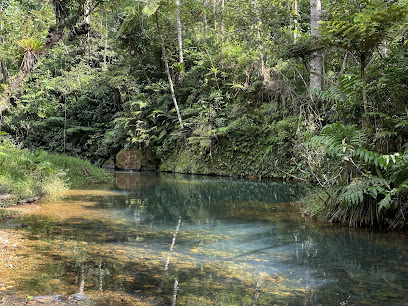
Rainforest Zipline Park
Discover the thrill of ziplining in Puerto Rico's lush rainforests at Rainforest Zipline Park, a top amusement park for nature lovers and adventure seekers.
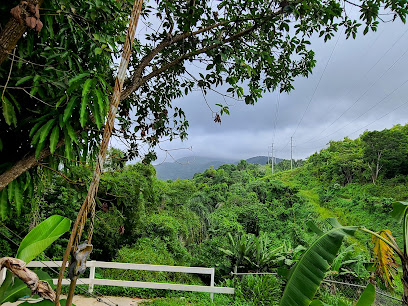
Charco El Hippie
Explore Charco El Hippie, a beautiful nature preserve in Naguabo, Puerto Rico, where vibrant ecosystems and serene waters await your visit.
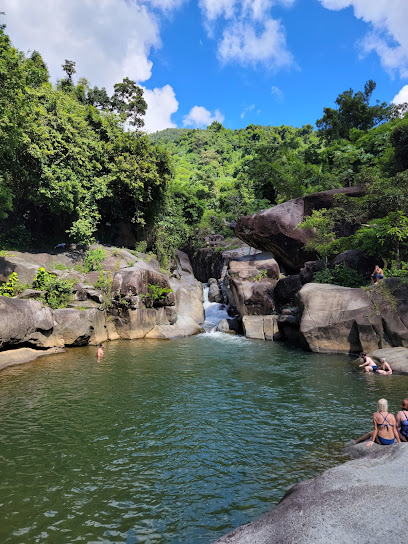
Puente Roto
Experience the breathtaking beauty of Puente Roto, a stunning bridge nestled in the heart of Puerto Rico's lush landscapes and El Yunque Rainforest.
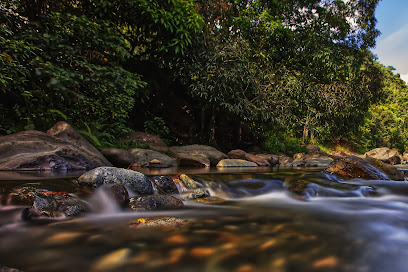
Parque Histórico Cueva María de la Cruz
Explore the stunning caves and rich culture at Parque Histórico Cueva María de la Cruz in Loíza, Puerto Rico—a perfect blend of adventure and history.
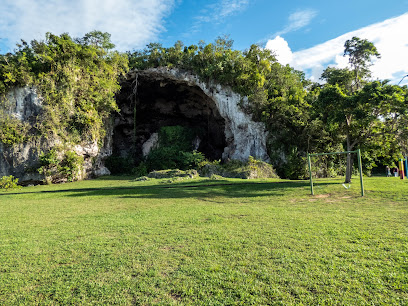
El Yunque Treehouse
Discover the flavors of Puerto Rico at El Yunque Treehouse, a unique dining experience in the heart of stunning nature.
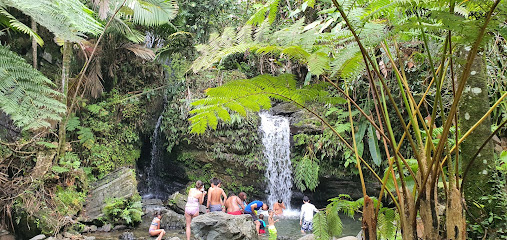
Bosque Estatal Toro Negro
Discover the breathtaking landscapes and rich biodiversity of Bosque Estatal Toro Negro, Puerto Rico's hidden gem for nature lovers and adventure seekers.
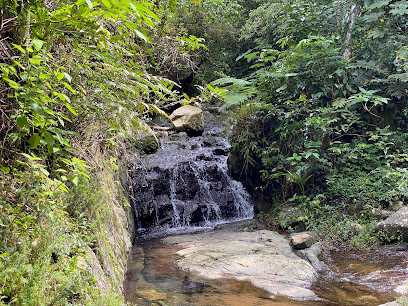
Junglequi Zipline Park
Experience the thrill of soaring through El Yunque Rainforest at Junglequi Zipline Park, where adventure meets breathtaking natural beauty.
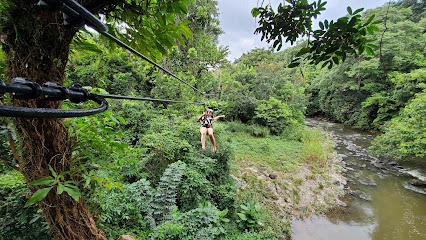
Unmissable attractions to see
Plaza Las Américas
Explore Plaza Las Américas: The Caribbean's largest shopping mall, offering diverse shopping, dining, and entertainment experiences in San Juan.
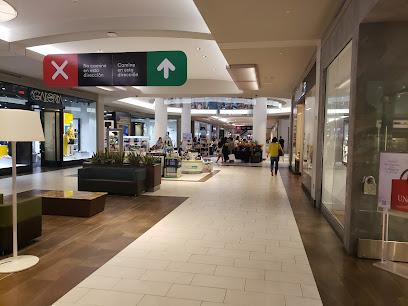
Snorkeling Puerto Rico | Boat Tours
Explore the breathtaking underwater wonders of Fajardo with Snorkeling Puerto Rico's unforgettable boat tours and snorkeling adventures.
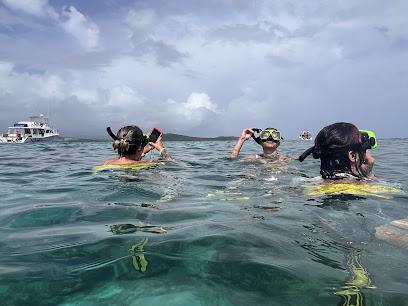
La Ventana al Mar
Discover the beauty of Puerto Rico at La Ventana al Mar, a scenic park in San Juan perfect for relaxation and cultural exploration.
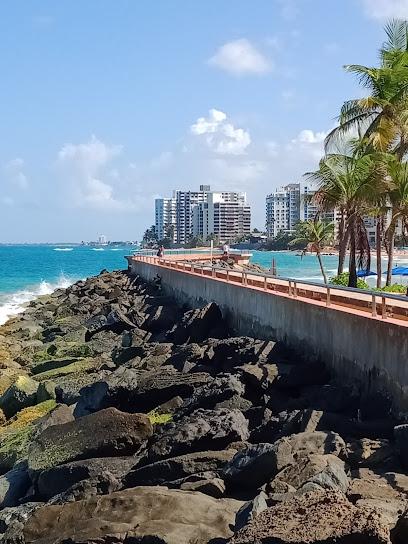
Playa Ocean Park
Explore the beautiful sands and vibrant culture of Playa Ocean Park, a must-visit beach in San Juan, Puerto Rico.
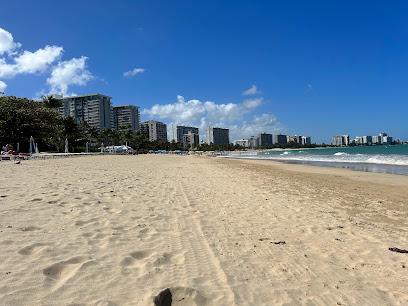
Charco El Hippie
Explore the serene beauty of Charco El Hippie, a tranquil nature preserve in Naguabo, Puerto Rico, perfect for escaping the tourist crowds.
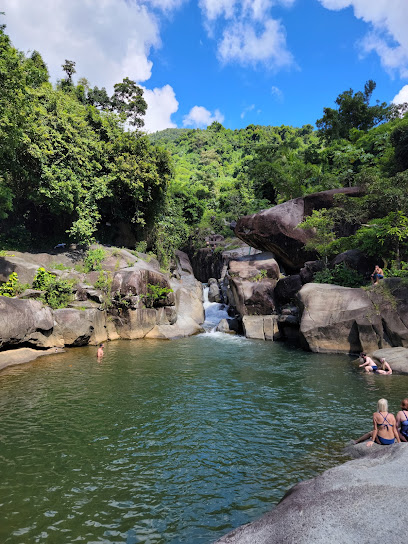
Puente Roto
Explore Puente Roto - A breathtaking bridge in Río Grande, Puerto Rico, where nature's beauty meets architectural charm.

Hobie Beach
Discover the charm of Hobie Beach in Carolina, Puerto Rico, where adventure meets relaxation on stunning shores and vibrant waters.
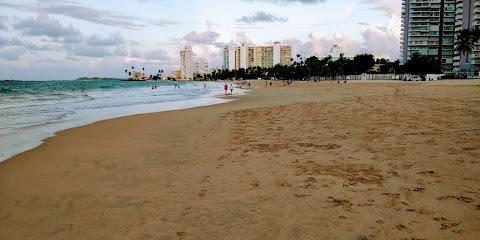
Reserva Natural Cabezas de San Juan - Para la Naturaleza
Discover the stunning landscapes and rich heritage of Reserva Natural Cabezas de San Juan, a premier nature preserve in Fajardo, Puerto Rico.

Puerto Rico Bio Bay Tours LLC.
Explore the dazzling bioluminescent waters of Fajardo with Puerto Rico Bio Bay Tours for an unforgettable kayaking adventure.
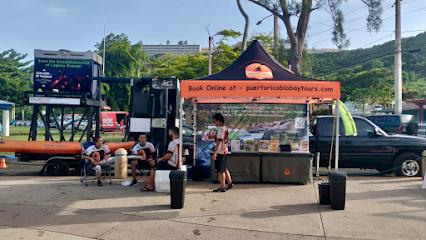
Spoon
Discover the rich culinary heritage of Puerto Rico at Spoon, where cooking classes and food tours bring the island's flavors to life.
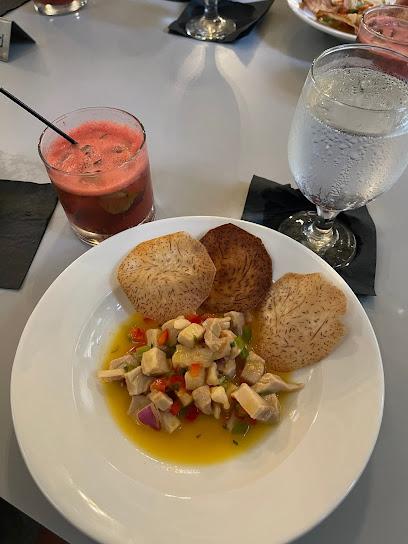
Torre Britton
Explore the beauty and history of Torre Britton, a captivating historical landmark in Río Grande, Puerto Rico with breathtaking views and serene surroundings.
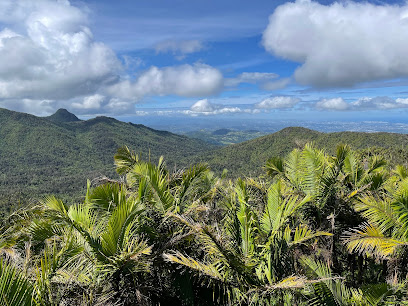
Plaza Pública de Río Grande
Explore the vibrant Plaza Pública de Río Grande, a cultural hub full of greenery, art, and local charm in the heart of Puerto Rico.
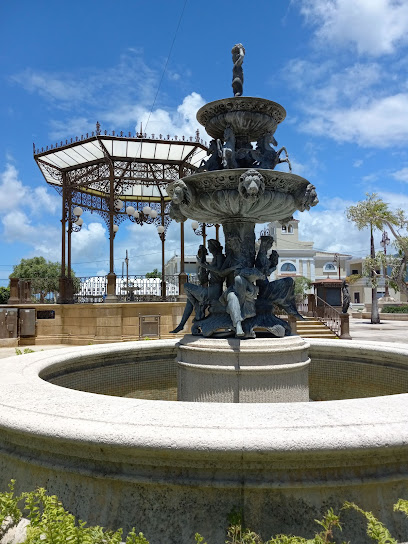
Museo del Mar
Explore the rich maritime history of Puerto Rico at the Museo del Mar, a captivating museum in the heart of San Juan's historic district.
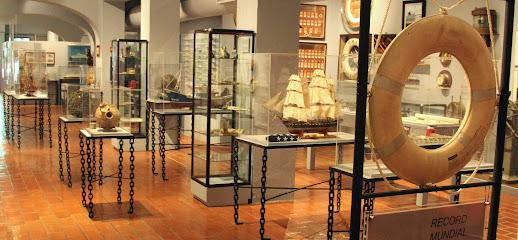
Plaza de los Salseros
Experience the vibrant pulse of Puerto Rico at Plaza de los Salseros, where salsa music and culture come alive in a stunning outdoor setting.
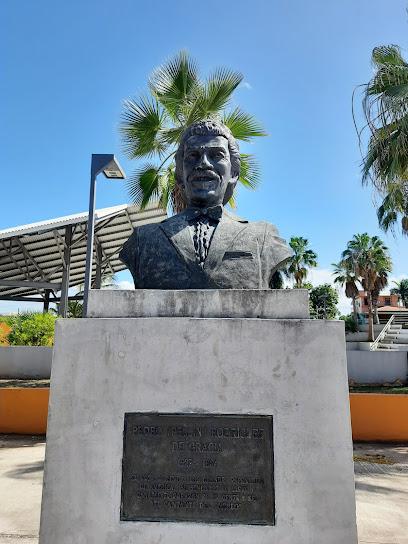
Cascada Río Espíritu Santo
Explore the breathtaking Cascada Río Espíritu Santo, a stunning waterfall offering serene beauty and vibrant nature in Río Grande, Puerto Rico.
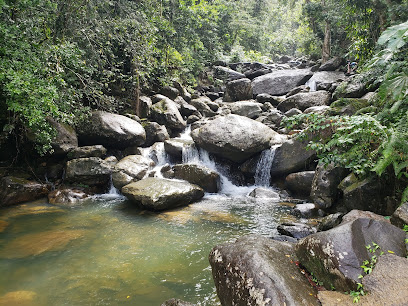
Essential places to dine
El Verde BBQ
Experience authentic Puerto Rican barbecue at El Verde BBQ in Río Grande – where flavor meets affordability in every delicious bite.
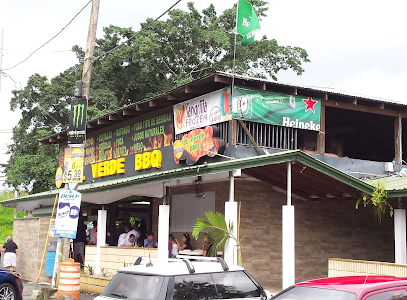
Don Pepe
Experience authentic Puerto Rican flavors at Don Pepe in Río Grande – where every dish tells a story.
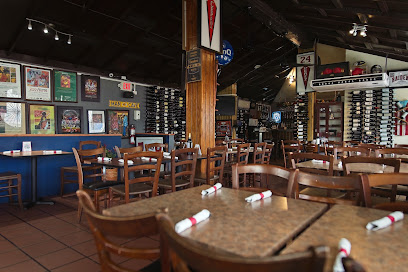
Terruño
Experience authentic Puerto Rican flavors at Terruño, Luquillo's premier destination for artisanal dining amidst stunning coastal views.
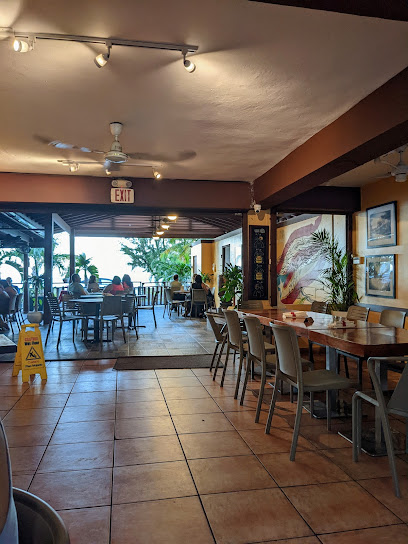
Ekelekua - Brunch, Bar & Tapas
Discover Ekelekua in Río Grande – where vibrant flavors meet the charm of Puerto Rico's culinary scene.
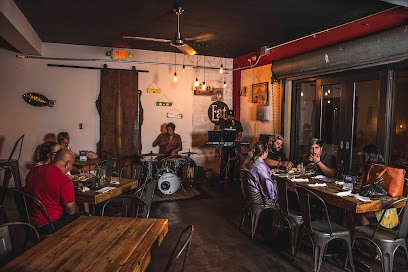
Bacoa Finca + Fogón
Experience authentic Puerto Rican flavors at Bacoa Finca + Fogón in Juncos – where tradition meets contemporary cuisine in a stunning natural setting.
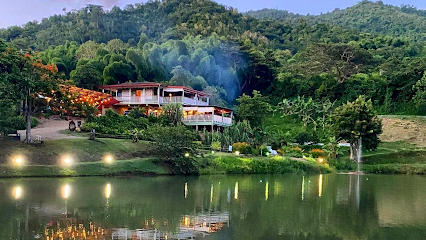
Richie's Restaurant
Experience authentic Puerto Rican flavors at Richie's Restaurant in Río Grande - a culinary delight amidst tropical beauty.
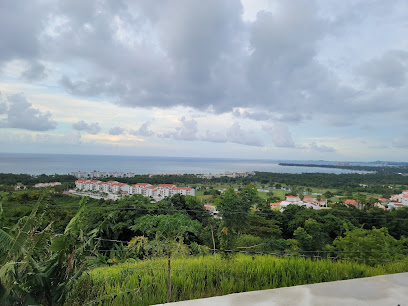
El Yunque Treehouse
Experience authentic Puerto Rican cuisine at El Yunque Treehouse, where nature meets flavor in a stunning forest setting.
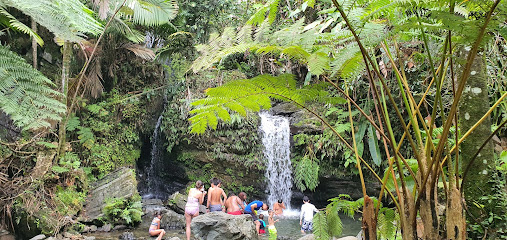
La Resaca
Experience the authentic taste of Puerto Rico at La Resaca – where every bite tells a story and every meal is a celebration.
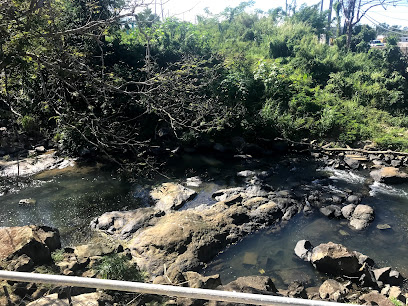
Terraza Montemar Restaurant
Experience authentic Puerto Rican cuisine with stunning views at Terraza Montemar Restaurant in Palmer.
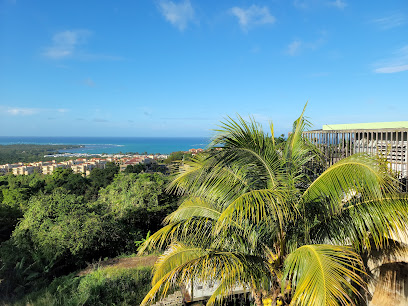
Bungalu Rest & Bar
Discover culinary delights at Bungalu Rest & Bar in Río Grande, where local flavors meet breathtaking views in a vibrant atmosphere.
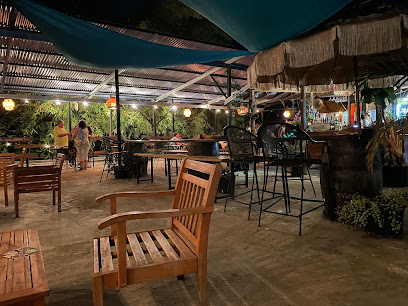
Desperado Restaurant
Experience authentic Puerto Rican cuisine at Desperado Restaurant in Río Grande – where every dish tells a story.
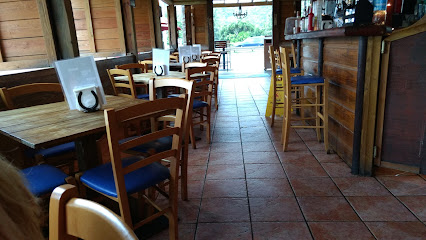
Patria Mía Puerto Rican Chinchorro
Experience authentic Puerto Rican cuisine at Patria Mía in Río Grande—where every dish tells a story.
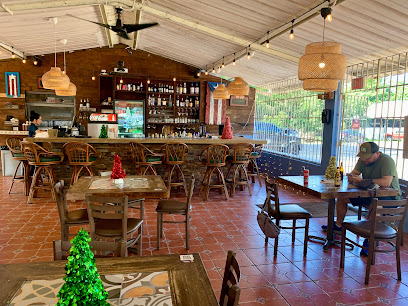
La Muralla
Discover authentic Puerto Rican cuisine at La Muralla in Río Grande – where every meal tells a story.
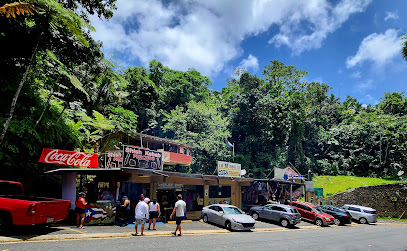
El Oceano En Tu Mesa
Discover El Oceano En Tu Mesa: A seafood gem in Río Grande where every dish tells a story of Puerto Rican coastal flavors.
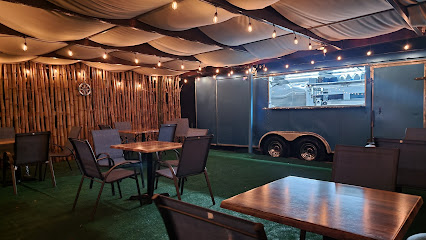
Las Picuas 123 Seafood Restaurant
Discover authentic Puerto Rican seafood at Las Picuas 123 Seafood Restaurant, where every dish tells a story of flavor and tradition.
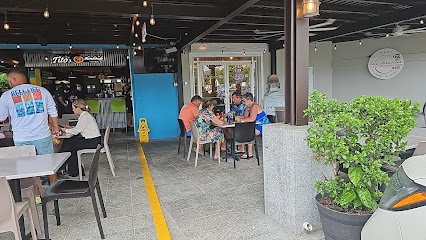
Markets, malls and hidden boutiques
El Yunque National Forest
Explore the lush tropical beauty and rich biodiversity of El Yunque National Forest, Puerto Rico's stunning rainforest paradise.
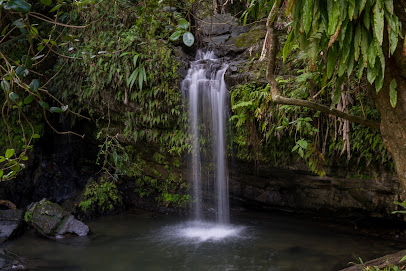
El Portal de El Yunque Visitor Center - El Yunque National Forest
Explore the breathtaking beauty of El Yunque National Forest at the El Portal de El Yunque Visitor Center, your gateway to an unforgettable nature experience.
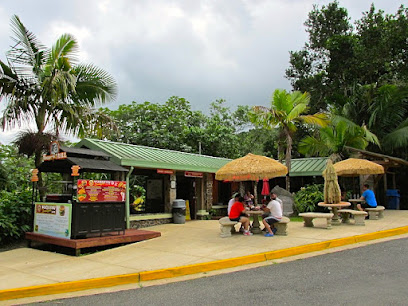
El Yunque Brunch.Coffee.Bakery
Experience the best of Puerto Rican pastries, coffee, and brunch at El Yunque Brunch.Coffee.Bakery in Río Grande, a must-visit for food lovers.
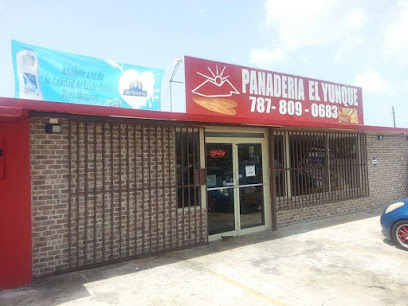
Las Picuas Convenience and liquor Store 123
Explore Las Picuas Convenience and Liquor Store 123 for local flavors, snacks, and essentials in Palmer, Río Grande, Puerto Rico.
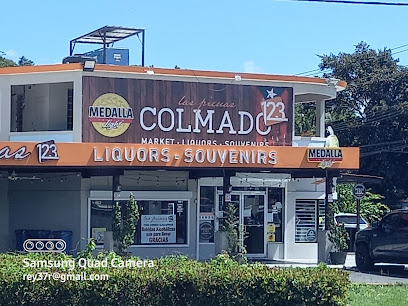
Super Ahorros Gaby
Explore local flavors and essentials at Super Ahorros Gaby, a vibrant supermarket in Río Grande with health, beauty, and grocery offerings.
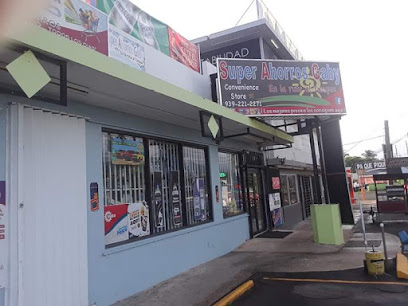
Caribbean Trading Company
Explore the Caribbean Trading Company for unique souvenirs, handcrafted gifts, and exquisite cigars, all celebrating Puerto Rican culture.
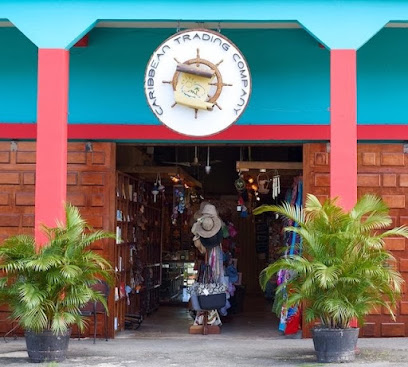
El Paraiso de las Pinatas
Explore the vibrant world of handcrafted piñatas and unique candles at El Paraiso de las Piñatas in Río Grande, where culture and creativity collide.
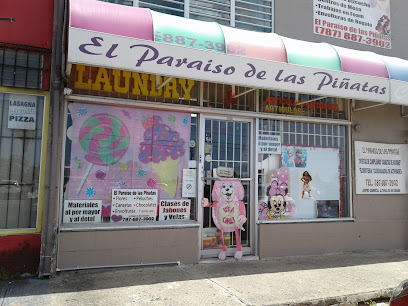
Sunglass Hut
Discover the ultimate sunglasses experience at Sunglass Hut in San Juan, where style meets quality and expert service awaits.

Artisan Forest
Discover unique Puerto Rican handicrafts and art at Artisan Forest, a charming gift shop in Río Grande, perfect for souvenirs and local treasures.
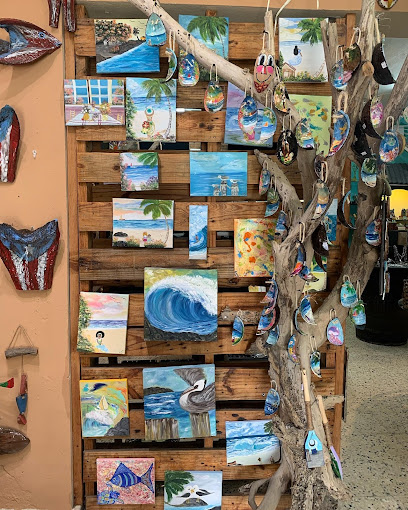
Playasol
Discover the essence of Puerto Rico at Playasol, where unique souvenirs and local artistry come together in a charming shopping experience.

SUN VIBES PUERTO RICO
Explore the vibrant artistic scene of Puerto Rico at Sun Vibes, a unique boutique offering handcrafted treasures and local art.
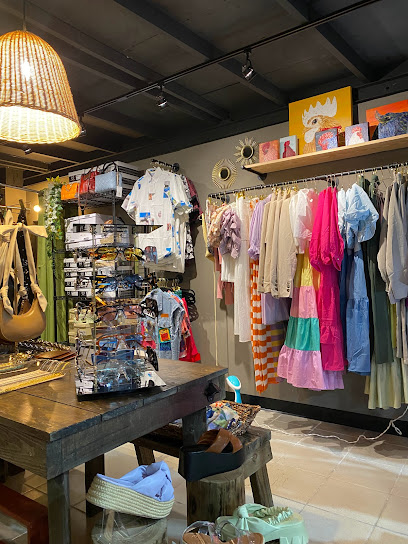
JUEYERA EL YUNQUE
Explore local flavors at JUEYERA EL YUNQUE, a vibrant grocery store in Río Grande offering fresh produce and authentic Puerto Rican ingredients.
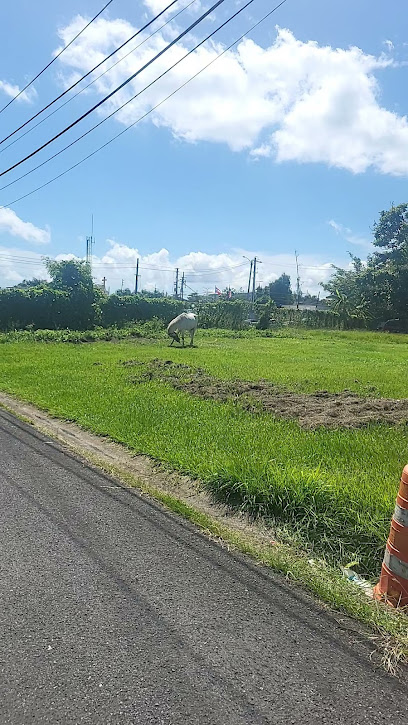
Yita Art & Craft Supplies
Explore Yita Art & Craft Supplies in Jayuya, offering a wide selection of art materials and a hub for local creativity and artistic expression.
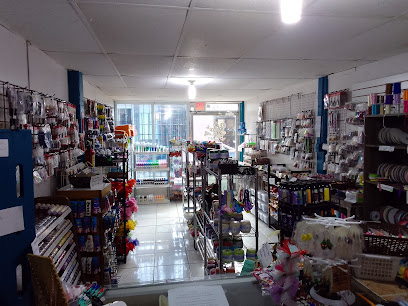
Alas Estilo Boutique
Discover the essence of Puerto Rican fashion at Alas Estilo Boutique, where local craftsmanship meets vibrant style in Jayuya.

Lee Ann Mobile Boutique
Shop unique, locally crafted fashion at Lee Ann Mobile Boutique in Río Grande, where personalized service meets vibrant Puerto Rican style.

Essential bars & hidden hideouts
El Yunque Treehouse
Discover El Yunque Treehouse, a unique Puerto Rican dining spot in the lush rainforest offering authentic cuisine and stunning views, perfect for every traveler.
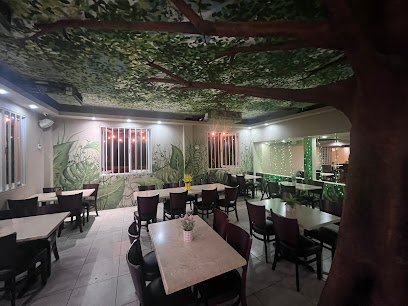
La Resaca
Discover La Resaca, a grill paradise in Río Grande, where local flavors and a lively atmosphere create unforgettable dining experiences.
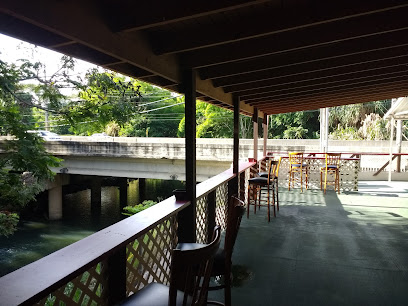
El Flamboyán
Experience the vibrant atmosphere of El Flamboyán, Luquillo's premier bar, offering delicious drinks and a taste of Puerto Rican culture.

Carabalí Bar & Grill
Experience the vibrant flavors of Puerto Rican cuisine at Carabalí Bar & Grill in Luquillo, a must-visit destination for food lovers.
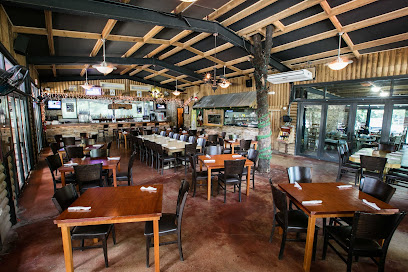
Pikaytos
Discover the vibrant flavors and lively karaoke nights at Pikaytos, the perfect spot for food and fun in Río Grande.
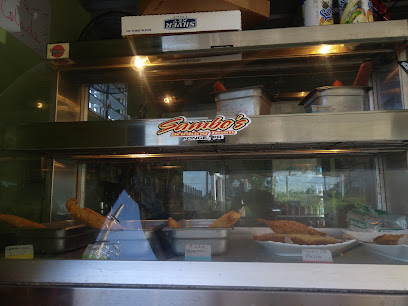
El Yunque Rainforest Cafe
Discover the flavors of the Caribbean at El Yunque Rainforest Cafe, where local cuisine meets the breathtaking beauty of Puerto Rico's rainforest.
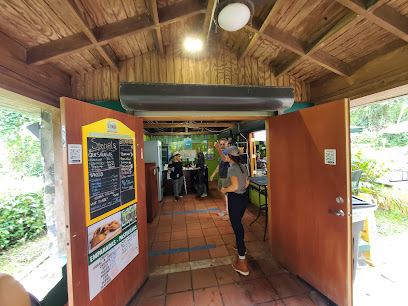
El Oasis Amarillo
Savor the vibrant flavors of Puerto Rico at El Oasis Amarillo, where authentic grilled dishes meet warm hospitality in the heart of Río Grande.
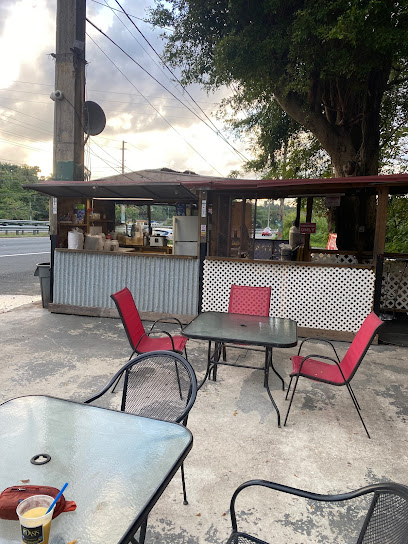
Dos Tiempos Bar
Discover the enchanting nightlife at Dos Tiempos Bar in Río Grande, where crafted cocktails and vibrant local culture await every visitor.
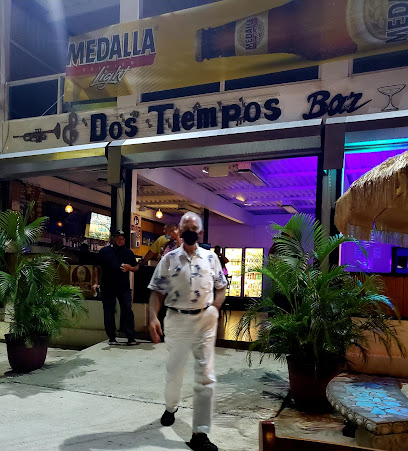
Medina Sport Bar
Discover the lively Medina Sport Bar in Río Grande, where refreshing drinks and a vibrant atmosphere create the perfect local experience.

Cross the Bridge
Discover the vibrant atmosphere at Cross the Bridge in Río Grande, where exquisite cocktails and local culture meet for an unforgettable bar experience.
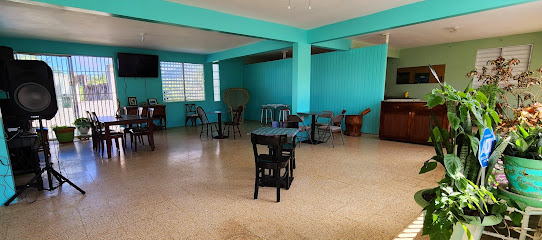
Colmado Bar Tres Caminos
Experience the vibrant atmosphere of Colmado Bar Tres Caminos in Río Grande, where friendly service meets affordable drinks in a cozy setting.
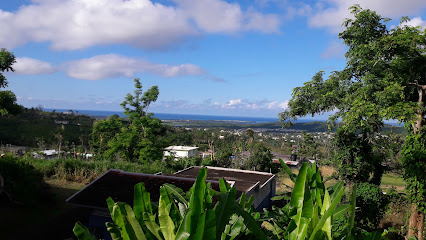
Caicu Bar
Discover the vibrant atmosphere and exquisite cocktails at Caicu Bar, your tropical escape in Río Grande, Puerto Rico.
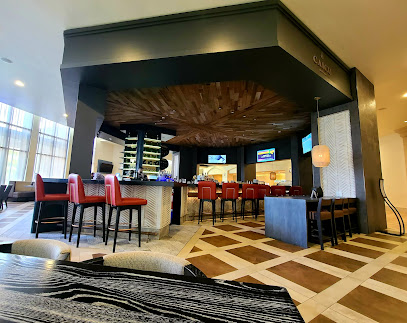
Negocio Las Pailas
Experience the lively flavors and vibrant atmosphere of Negocio Las Pailas, a must-visit bar in Luquillo, Puerto Rico.
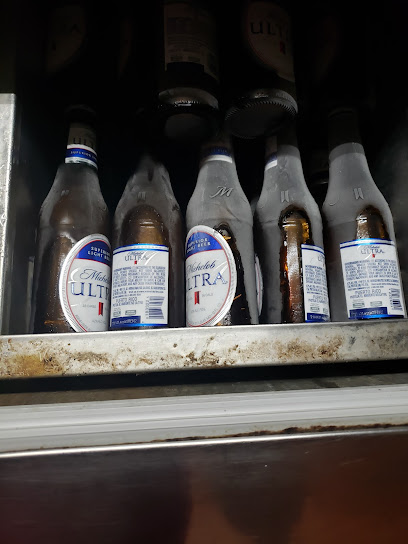
Jukiao’s Mojito Bar
Dive into the vibrant nightlife of Río Grande at Jukiao’s Mojito Bar, where refreshing cocktails and lively ambiance await.
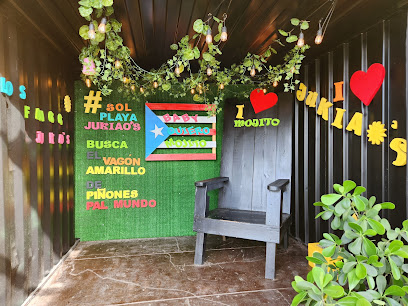
Nery’s Place
Experience the vibrant nightlife at Nery's Place, a top bar in Río Grande offering delicious drinks and a friendly atmosphere.
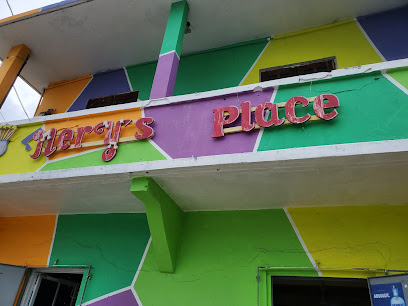
Local Phrases about El Yunque National Forest
-
- HelloHola
[oh-lah] - GoodbyeAdiós
[ah-dee-ohs] - YesSí
[see] - NoNo
[noh] - Please/You're welcomePor favor/De nada
[por fah-vohr/deh nah-dah] - Thank youGracias
[grah-see-ahs] - Excuse me/SorryPerdón/Lamento
[pair-dohn/lah-men-toh] - How are you?¿Cómo estás?
[koh-moh ehs-tahs] - Fine. And you?Bien. ¿Y tú?
[byen. ee too] - Do you speak English?¿Hablas inglés?
[ah-blahs een-glehs] - I don't understandNo entiendo
[noh ehn-tee-ehn-doh]
- HelloHola
-
- I'd like to see the menu, pleaseMe gustaría ver el menú, por favor
[meh goo-stah-ree-ah behr ehl meh-noo, por fah-vohr] - I don't eat meatNo como carne
[noh koh-moh kahr-neh] - Cheers!¡Salud!
[sah-loohd] - I would like to pay, pleaseMe gustaría pagar, por favor
[meh goo-stah-ree-ah pah-gahr, por fah-vohr]
- I'd like to see the menu, pleaseMe gustaría ver el menú, por favor
-
- Help!¡Ayuda!
[ah-yoo-dah] - Go away!¡Vete!
[veh-teh] - Call the Police!¡Llama a la Policía!
[yah-mah ah lah poh-lee-see-ah] - Call a doctor!¡Llama a un doctor!
[yah-mah ah oon dohk-tohr] - I'm lostEstoy perdido
[ehs-toy pair-dee-doh] - I'm illEstoy enfermo
[ehs-toy ehn-fehr-moh]
- Help!¡Ayuda!
-
- I'd like to buy...Me gustaría comprar...
[meh goo-stah-ree-ah kohm-prahr] - I'm just lookingSolo estoy mirando
[soh-loh ehs-toy meer-ahn-doh] - How much is it?¿Cuánto cuesta?
[kwan-toh kwehs-tah] - That's too expensiveEso es demasiado caro
[eh-soh ehs deh-mah-syah-doh kah-roh] - Can you lower the price?¿Puedes bajar el precio?
[pweh-dehs bah-hahr ehl pree-see-oh]
- I'd like to buy...Me gustaría comprar...
-
- What time is it?¿Qué hora es?
[keh oh-rah ehs] - It's one o'clockEs la una en punto
[ehs lah oo-nah ehn poon-toh] - Half past (10)Media después de las diez
[meh-dee-ah dehs-pwehs deh lahs dyehs] - MorningMañana
[mah-nyah-nah] - AfternoonTarde
[tahr-deh] - EveningNoche
[noh-cheh] - YesterdayAyer
[ah-yehr] - TodayHoy
[oy] - TomorrowMañana
[mah-nyah-nah] - 1Uno
[oo-noh] - 2Dos
[dohs] - 3Tres
[trehs] - 4Cuatro
[kwah-troh] - 5Cinco
[seen-koh] - 6Seis
[says] - 7Siete
[syeh-teh] - 8Ocho
[oh-choh] - 9Nueve
[nweh-veh] - 10Diez
[dyehs]
- What time is it?¿Qué hora es?
-
- Where's a/the...?¿Dónde está...?
[dohn-deh ehs-tah] - What's the address?¿Cuál es la dirección?
[kwal ehs lah dee-rehk-syohn] - Can you show me (on the map)?¿Puedes mostrarme (en el mapa)?
[pweh-dehs mohs-trar-meh (ehn ehl mah-pah)] - When's the next (bus)?¿Cuándo es el próximo (autobús)?
[kwan-doh ehs ehl proh-ksy-moh (ow-toh-booos)] - A ticket (to ....)Un boleto (para ....)
[oon boh-leh-toh (pah-rah)]
- Where's a/the...?¿Dónde está...?
History of El Yunque National Forest
-
Long before the arrival of Europeans, the Taíno people inhabited the island of Puerto Rico. El Yunque, known to them as 'Yukiyú', was considered a sacred place and home to their chief deity, Yúcahu. The Taíno would often visit the forest to perform rituals and seek spiritual guidance.
-
In 1493, Christopher Columbus arrived in Puerto Rico, marking the beginning of Spanish colonization. The Spanish settlers were awed by the lush, dense forests of El Yunque. They called it 'Sierra de Luquillo' after the nearby town of Luquillo. The forest was used for timber and other resources, though its dense terrain made large-scale exploitation difficult.
-
In 1876, King Alfonso XII of Spain proclaimed El Yunque as one of the first forest reserves in the Western Hemisphere. This early conservation effort aimed to protect the forest's rich biodiversity and resources from over-exploitation.
-
After the Spanish-American War in 1898, Puerto Rico became a territory of the United States. In 1903, President Theodore Roosevelt designated El Yunque as a National Forest, making it the only tropical rainforest in the U.S. National Forest System. This designation further advanced conservation efforts and scientific studies.
-
In 1989, Hurricane Hugo struck Puerto Rico, causing extensive damage to El Yunque. The forest underwent a significant recovery process, demonstrating its resilience and the importance of conservation practices. The event also led to increased scientific interest in the forest's ability to recover from natural disasters.
-
El Yunque continues to be a culturally significant site for the people of Puerto Rico. The forest is intertwined with local myths and legends, including stories of the Taíno deity Yúcahu and the protective spirit of the forest. It remains a popular destination for both locals and tourists seeking to connect with nature and Puerto Rican heritage.
El Yunque National Forest Essentials
-
El Yunque National Forest is located in northeastern Puerto Rico, approximately 25 miles east of San Juan. The nearest major airport is Luis Muñoz Marín International Airport (SJU) in San Juan. From the airport, you can rent a car, take a taxi, or use a shuttle service to get to the forest. The drive from San Juan to El Yunque takes about 45 minutes to an hour via Route 66 and PR-3.
-
The most convenient way to explore El Yunque National Forest is by renting a car. This allows you to move at your own pace and visit different areas of the forest. There are parking areas near the main attractions. Public transportation options are limited, but some tour companies offer guided tours with transportation included. Taxis and ride-sharing services like Uber are available in Puerto Rico, but they may not be as convenient for exploring the forest.
-
The official currency in Puerto Rico is the United States Dollar (USD). Credit and debit cards are widely accepted in most establishments, including hotels, restaurants, and shops. However, it is advisable to carry some cash for smaller vendors or in case of emergencies. ATMs are available in nearby towns such as Río Grande and Luquillo.
-
El Yunque National Forest is generally a safe destination for tourists. However, it is important to take standard precautions. Avoid leaving valuables in your car and keep an eye on your belongings. While the forest itself is safe, some nearby urban areas can have higher crime rates. It is recommended to avoid walking alone at night in unfamiliar areas. Always stay on marked trails within the forest to avoid getting lost or encountering dangerous wildlife.
-
In case of an emergency, dial 911 for immediate assistance. The nearest medical facilities are in the towns of Río Grande and Fajardo. It is advisable to have travel insurance that covers medical emergencies. For minor health issues, there are pharmacies in nearby towns where you can purchase over-the-counter medications. Rangers are available in the forest to assist with any emergencies or provide information.
-
Fashion: Do wear comfortable hiking shoes and light, breathable clothing. Don't wear flip-flops or sandals on trails. Religion: Do respect any local customs you may encounter, though El Yunque is a national forest primarily focused on nature. Public Transport: Do use car rentals or guided tours for convenience. Don't rely on public transport for getting around the forest. Greetings: Do greet people with a friendly 'Hola' or 'Buenos días.' Eating & Drinking: Do try local Puerto Rican dishes at nearby towns. Don't litter; always carry out what you bring in to help preserve the natural beauty of the forest.
-
To experience El Yunque National Forest like a local, consider visiting less crowded trails such as the Angelito Trail or the El Toro Trail. Engage with the park rangers and local guides who can share insights about the forest's history and biodiversity. Visit the nearby towns of Luquillo and Fajardo for local cuisine, including fresh seafood and traditional Puerto Rican dishes. Don’t miss the chance to swim in one of the forest’s natural pools, such as La Mina Falls or Juan Diego Creek.
Trending Landmarks in El Yunque National Forest
-
Castillo San Felipe del Morro
-
Carabalí Rainforest Park
-
Las Pailas
-
Torre Yokahú (Yokahu Tower)
-
El Portal de El Yunque Visitor Center - El Yunque National Forest
-
La Piedra Escrita
-
Juan Diego Falls
-
Bosque Estatal de Carite
-
Rainforest Zipline Park
-
Charco El Hippie
-
Puente Roto
-
Parque Histórico Cueva María de la Cruz
-
El Yunque Treehouse
-
Bosque Estatal Toro Negro
-
Junglequi Zipline Park
Nearby Cities to El Yunque National Forest
-
Things To Do in Luquillo
-
Things To Do in Carolina
-
Things To Do in Caguas
-
Things To Do in Bayamón
-
Things To Do in Vieques
-
Things To Do in Guayama
-
Things To Do in Culebra
-
Things To Do in Dorado
-
Things To Do in Manatí
-
Things To Do in Ponce
-
Things To Do in Arecibo
-
Things To Do in Jost Van Dyke
-
Things To Do in West End
-
Things To Do in Guánica
-
Things To Do in Tortola









